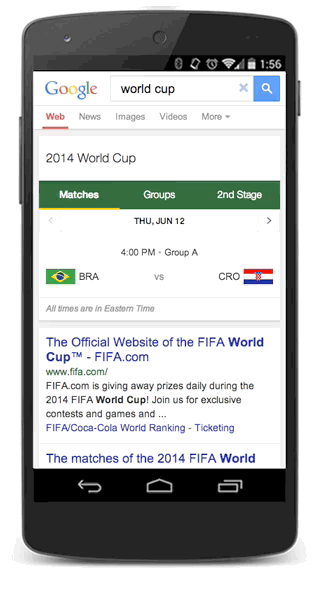For years, Intel has quietly fought a battle to dodge the EU’s ruling that it abused its dominant market position and damaged AMD. Today, it lost that fight. The EU has affirmed that the case was properly decided in 2009, and that the fine of 1.06 billion euros (around $1.45 billion) was proportionate. This fine is in addition to the $1.25 billion settlement that Intel ponied up in 2009 following an FTC investigation in the US.
The EU’s second-highest court states: “The General Court considers that none of the arguments raised by Intel supports the conclusion that the fine imposed is disproportionate. On the contrary, it must be considered that that fine is appropriate in the light of the facts of the case.”
The EU found, in part:
- That Intel paid rebates to manufacturers on the condition that they would buy all (Dell) or nearly all of their CPUs from Intel.
- That it paid retail stores rebates to only stock x86 parts.
- That it paid computer manufacturers to halt or delay the launch of AMD hardware, including Dell, Acer, Lenovo, and NEC.
- That it restricted sales of AMD CPUs based on business segment and market. OEMs were given permission to sell higher percentages of AMD desktop chips, but were required to buy up to 95% of business processors from Intel. At least one manufacturer was forbidden to sell AMD notebook chips at all.

Intel then further restricted manufacturer sales by only allowing the 5% of business systems to be sold to small and medium enterprises, only via direct distribution, and only if the business distributor pushed back the launch a further six months.
The difference between “aggressive competition” and “antitrust abuse”
One of the differences between the EU and US judicial systems is that in the US, AMD would have had to prove that consumers were directly harmed by Intel’s actions. In the EU, consumer harm is not required to prove market abuse — simply that a company abused its dominant position and distorted the competitive market. Given the scope and scale of Intel’s actions, it’d be difficult to argue that this didn’t happen.
Intel ramped up these behaviors in the early 2000s when the Pentium 3 had run out of gas and the P4 was floundering. It began leaning on them even more aggressively once Opteron and the Athlon 64 launched — Intel executives are on-record as referring to Dell as “the best friend money can buy.” Elsewhere, Intel openly acknowledges that it used rebates (also called the MCP, Meet Comp Program) to keep OEMs away from AMD.

Intel gave AMD share in desktops, where margins were the smallest.
At one point, a Dell executive notes that Intel executives “are prepared for an all-out war if Dell joins the AMD exodus. We get ZERO MCP for at least one quarter while Intel ‘investigates the details’ … We’ll also have to bite and scratch to hold 50%, including a commitment to NOT ship in Corporate. If we go in Opti, they cut it to <20% and use the added MCP to compete against us.” (Opti meaning Optiplex, Dell’s business segment). Note that Intel isn’t just threatening to withhold payment — it’s telling Dell it’ll take the MCP money the company would’ve gotten, and give it to Dell’s competitors.
In the past, I’ve gone after OEM manufacturers for
failing to take any kind of risks in product marketing and creating an abominable laptop market, but there is another side to this particular coin. Intel’s own policies created and enforced a situation in which OEMs were ultimately trapped in a cutthroat race-to-the-bottom scenario — if Dell gave up
marketingfunds, HP could take those funds, cut its prices lower to compensate, and then be undercutting Dell. In its original
antitrust filing, AMD noted that it tried to give HP a million
free processors at one point, only to be told that HP was so dependent on Intel rebates, it couldn’t afford to take them.
Note that beginning in 2005, when AMD launched dual-core Athlon 64 processors and was seriously hammering Prescott, Intel’s payments sharply increased.
A winning strategy
It’s hard to ignore the fact that in the long run, Intel got exactly what it wanted. AMD certainly deserves blame for its own mistakes — overpaying by 2x for ATI was a colossal blunder — but Intel still systemically disenfranchised its primary competitor from gaining market share. Whether this was bad for consumers depends on whether you think the Pentium D (Prescott) and dual-core Smithfield were bad components. From my perspective as a CPU reviewer, these were the nadir of Intel’s competitive position, and yes — AMD’s Athlon 64 and Opteron hardware deserved a better shot than it got.
Intel’s $1.25 billion payout to AMD in 2009 probably fairly represents the profit AMD might have taken
home over the same intervening period, but this was never about profits — it was about
time. And no matter what Intel ended up paying to the EU, it won time from AMD — and AMD was forced to
spin off GlobalFoundries in an attempt to accelerate its own product roadmaps.
Of course, in the long run, one might argue that Intel’s myopic focus on stuffing AMD and dominating the PC channel blinded it to the threat that was coming up behind. Today, Santa Clara dominates its conventional markets, but
continues to struggle to break into new ones. That’s cold comfort for AMD, but it neatly illustrates how even an industry-dominating titan can be caught unawares by events outside its direct control.


 fu
fu






















































